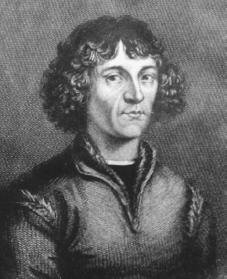
http://www.notablebiographies.com/Co-Da/Copernicus-Nicolaus.html
Nicolaus Copernicus was born Feb 14th 1473 in the town of Torun. His father was a well to-do merchant and his mother was a daughter of a wealthy merchant. He was the youngest child in his family. His father died when he was 10. After this his father’s brother, Lucas Watzelrode became his guardian. Lucas was bishop in the Catholic church. Nicolaus took after his uncle and became involved in the church. Between 1941 and 1942 he completed his matriculation, he also studied mathematical science. In 1497 he continued his studies at three Italian universities, Bologna, Padua and Ferrara. While in Italy he completed his Bi-doctorate in medicine and law.
Copernicus was many things, he was an astronomer, a mathematician, a translator, an artist, a physician, and a scholar. He also “ made maps, attended legislative bodies, held a variety of fiscal posts, acted as a diplomat and as a civil and military inspector, even wrote a treatise on the minting of money by the new Prussian states”.(Morrison.1)
In 1505 he returned to Poland where he was appointed at the Canon in the cathedral of Frauenburg. While there he continued to research astronomy and medical information. In 1513 he started his work on his heliocentric theory. In his early thirties he had documented a developed heliocentric theory of the solar system. His theory spread quickly through out the scientific world. Many astonomers and mathematician flocked to Nicolaus to get more information on this theory.
In 1543 his entire volume of On the Revolutions of Celestial Spheres was published, this is also the year that he passed away.
Here is a passage from Copernicus on his views:
We draw life from the glorious, incandescent sun. It rises daily in the east, until by nightfall it hides behind some horizon, whether land, sea or cloud, diving unseen to reappear at dawn in a different part of the starry background. The glittering stars move as a whole; each year the sun returns to a backdrop of bright points very near the one it left. The moon shows us a disk as wide as the sun's; its changing details are bright but cold, never a hot blaze. In about one month any viewer stationed on Earth can see the moon pass across the entire Zodiac. The outline of the bright, inconstant moon attends strictly to the position of the sun. When the sun lies behind any moon viewer, the moon is full face. When the moon lies right before us and the sun close to the same direction, we have a new moon. That new moon is unseen, for the moon, a cold and lightless rock, glows only under the sun's rays, and is lost to us whenever it is masked within the sun's power of brightening a skyful of blue air.
I find Copernicus very intriguing because of his deep involvement with the Catholic Church. Even though he was so involved he still had amazing scientific views, which went against what the church believed. I find it interesting that the church would allow him to hold such high positions inside the clergy while still researching his theories. I also wonder what happened after the church discovered his theories?
Copernicus in his prime. (Marginalia). Philip Morrison. American Scientist. 91.2 (March-April 2003)
http://www.famousscientist.org/nicolaus-copernicus/
No comments:
Post a Comment